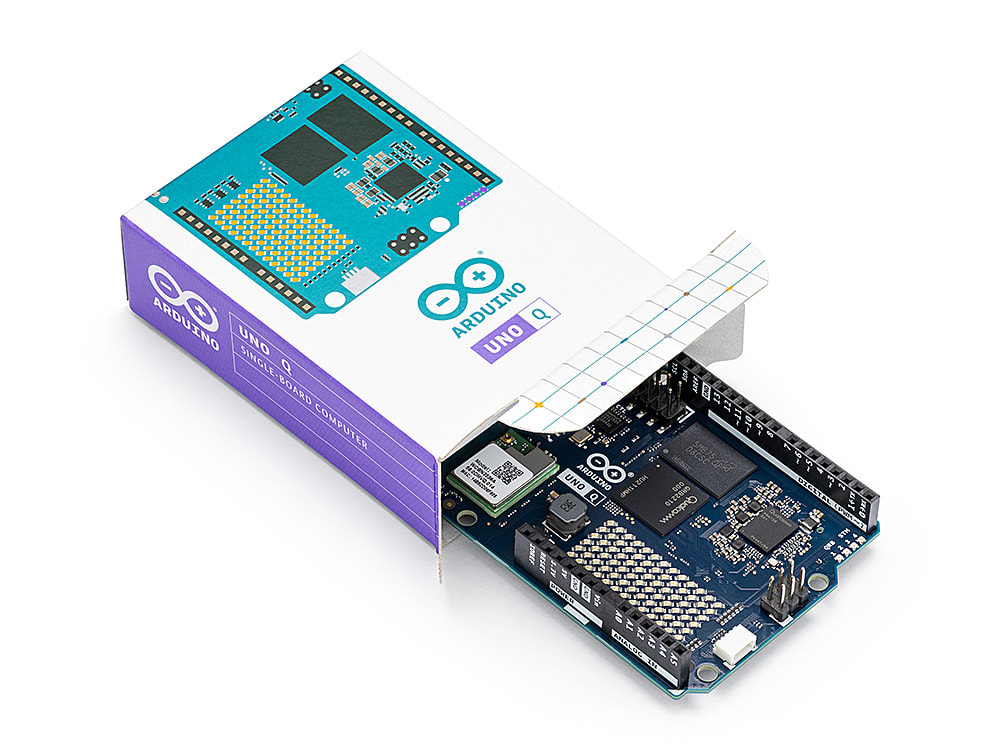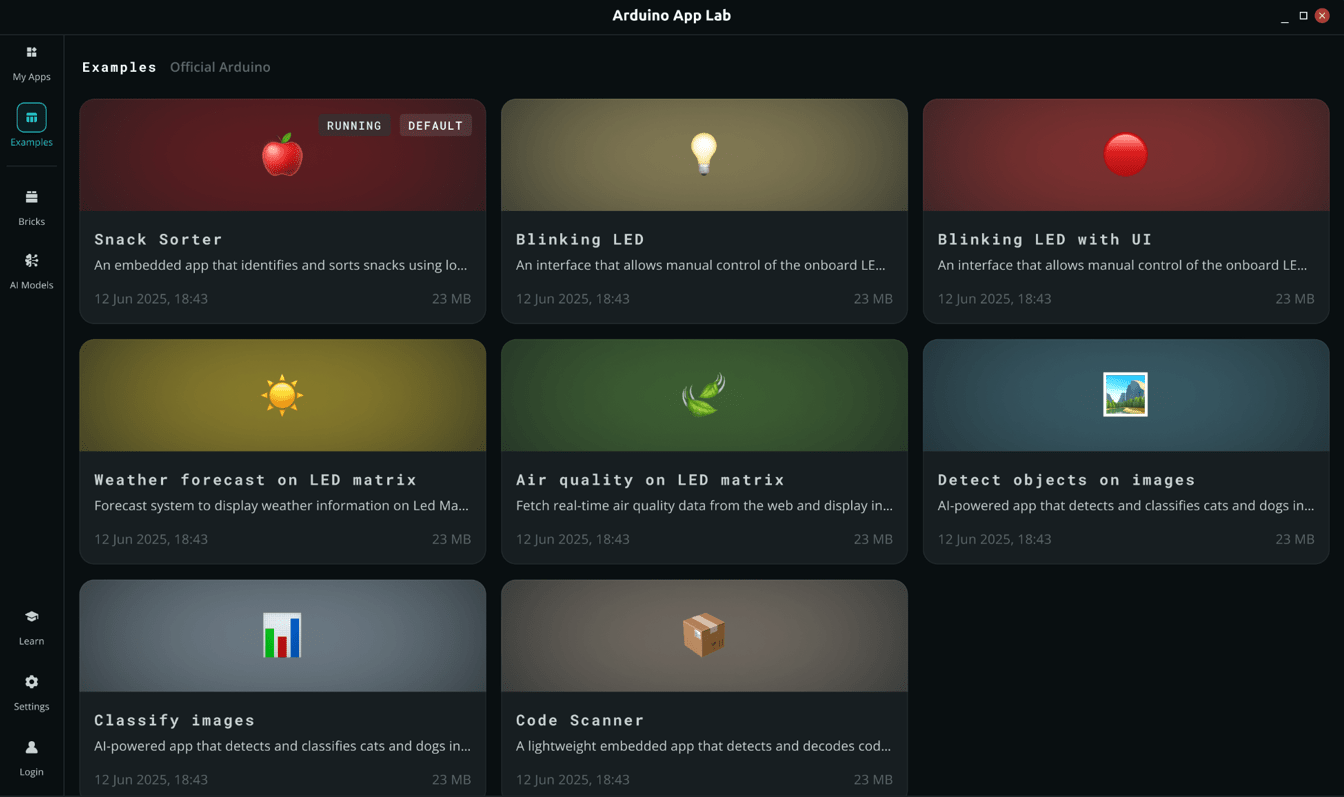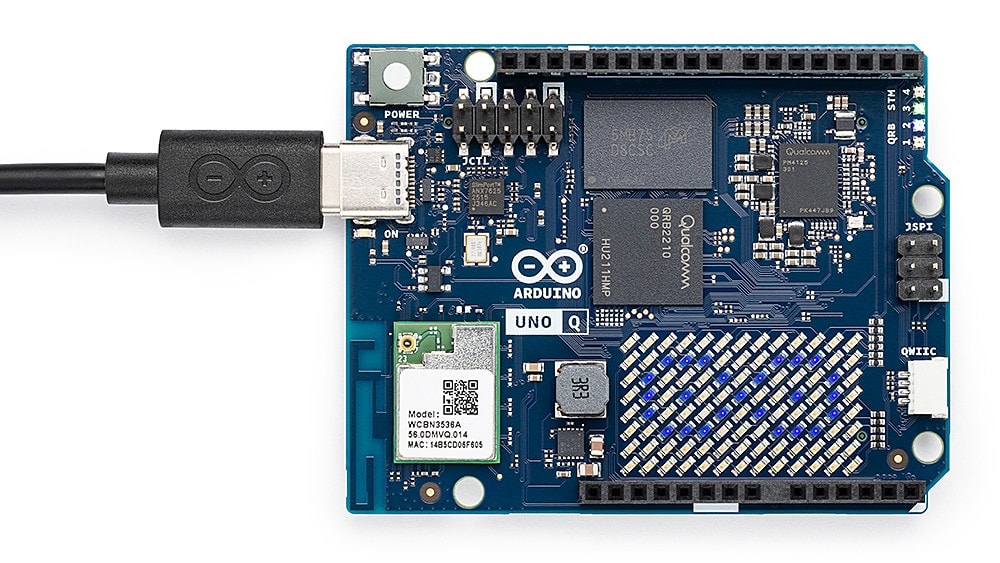UNO Q Marks Exciting New Chapter for Arduino

Image Source: Arduino
By Matt Campbell, Mouser Electronics
Published October 7, 2025
The Arduino UNO Q is more than just the next generation of the flexible UNO platform; it’s a new development paradigm. The dual-brain UNO Q pairs a Qualcomm® Dragonwing™ QRB2210 microprocessor (MPU) with a real-time STM32U585 microcontroller (MCU), giving users access to powerful Linux® Debian-capable computing as well as real-time responses. This combination of processing capabilities bridges the gap between the digital and physical worlds, bringing users’ ideas to life with the help of a robust suite of development tools.
Now available to order from Mouser Electronics, the UNO Q combines Arduino’s commitment to democratizing technology with Qualcomm’s microprocessor expertise, delivering an all-in-one development platform that brings your ideas to life in a blink.
Qualcomm and Arduino Announce Partnership
The technological leaps of the UNO Q are made possible by the exciting new alliance between Qualcomm and Arduino. The UNO Q merges Qualcomm’s expertise in edge artificial intelligence (AI) with Arduino’s intuitive architecture, resulting in a powerful yet approachable all-in-one development platform. Mouser looks forward to seeing this partnership bring new tools to our community of design engineers, students, and makers of all skill levels.
Introducing the UNO Q: From Blink to Think
Whether you need an all-in-one computer or precise real-time control, the dual-brain architecture of the UNO Q brings unprecedented processing power and flexibility to the UNO platform. The Qualcomm Dragonwing QRB2210 MPU supports a full Linux environment, enabling the UNO Q to act as a standalone development platform for Arduino sketches or Python® programming. The STM32U585 MCU rounds out the UNO Q’s capabilities with real-time operation, offering a convenient path for applications such as object recognition, voice commands, and motion detection.
Empowering Developers with the Arduino App Lab
The new Arduino App Lab serves as a central hub for developers to find project examples, tutorials, and AI models to jumpstart their own designs (Figure 1). Users can seamlessly combine Arduino sketches, Python scripts, and containerized AI models all in a single interface. The Arduino App Lab simplifies development for newer users and gives experienced developers advanced tools to augment their capabilities.

Figure 1: Example projects in the Arduino App Lab. (Source: Arduino)
AI in a Blink
The UNO Q has both the development and computing resources to make deploying AI applications easier than ever. The MPU supports audio inputs for sound recognition, visual inputs for image classification, and sensor inputs to help your design interact with the physical world. With the Arduino App Lab serving as a link between real-time computing, Linux, Python, and AI, the UNO Q streamlines powerful AI development capabilities for a variety of applications.
Key Specifications
- Qualcomm Dragonwing QRB2210 microprocessor
- Real-time, low-power STM32U585 microcontroller
- 2GB or 4GB Low-Power Double Data Rate 4 (LPDDR4) RAM
- 16GB or 32GB Embedded MultiMediaCard (eMMC), depending on variant, built-in (no SD card required)
- Dual-band Wi-Fi®5 (2.4GHz/5GHz), Bluetooth®5.1
- Power advanced peripherals: vision, audio, display, high-speed headers
- Classic UNO headers mount shields to add capabilities
- 8 × 13 LED matrix for visual creation and feedback
- USB-C connector (Figure 2) for power delivery, video output, or to connect keyboard, mouse, USB microphones, or USB cameras via a dongle
- Qwiic connector to easily expand with Modulino nodes with no soldering required

Figure 2: The UNO Q’s USB-C connector enables simple, quick connections with a variety of devices. (Source: Arduino)
Conclusion
The Arduino UNO Q joins powerful hardware resources with an extensive library of coding resources to accelerate development in next-generation AI applications. Users can take advantage of snap-on hardware capabilities with Arduino shields and Modulino nodes, as well as modular code segments and example projects in the Arduino App Lab. Qualcomm and Arduino combined their strengths into the UNO Q to create a robust development platform that brings your ideas to life faster than ever before, and Mouser is excited to be a part of their story.
Pre-order the UNO Q from Mouser today to make your next idea a reality.